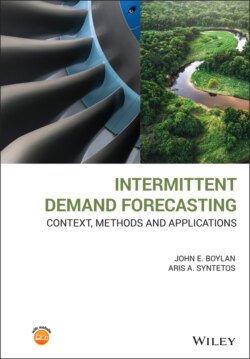Читать книгу Intermittent Demand Forecasting - John E. Boylan - Страница 42
2.3.2 Historical or Forecasted Demand?
ОглавлениеIn both of the papers discussed above, historical demand was employed. However, it has been argued that forecasted demand is more relevant for the stocking decision (Boylan 2018). It is the demand that is anticipated over the future that should determine an item's viability. The decision rules do not change their form as a consequence of this different perspective. All that changes is that forecasted mean demand (or number of movements) is used instead of the historical mean demand (or number of movements). The focus on the mean value is natural as the rules are based on the expected (mean) costs associated with stocking or not stocking an item.
The problem of whether to stock becomes particularly important when either products or spare parts reach the end of their life cycle, become obsolete, and are not being requested often or, eventually, at all. In Chapter 12, we return to this issue and discuss, in more detail, forecasting methods that have been proposed to estimate mean demand whilst allowing for explicit linkages to be made between the forecasting task and inventory obsolescence. More common methods for intermittent demand forecasting will be discussed in Chapter 6.
